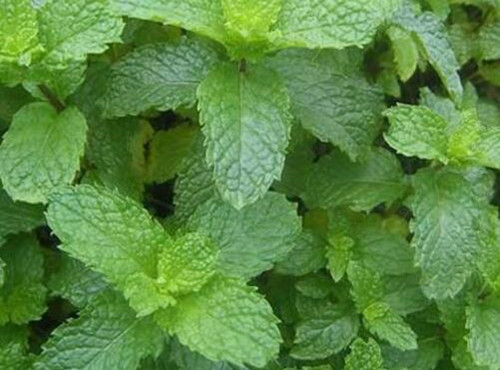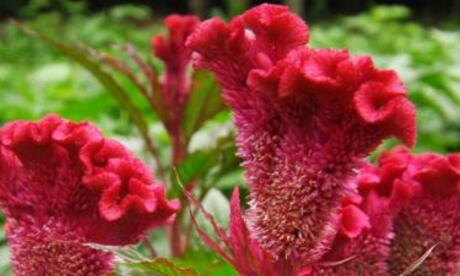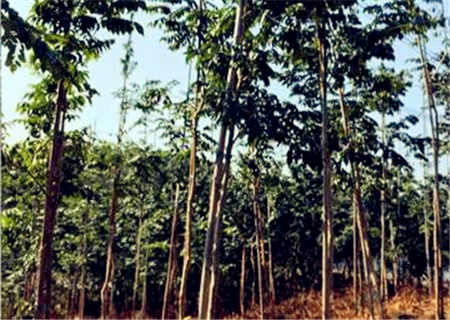How about the cost and profit of planting one mu of mint? What are the market prospects?
Peppermint is one of the commonly used traditional Chinese medicines in China. In China, Jiangsu and Anhui have the largest output. Not only can it be used medicinally, but also an aromatic crop with special economic value, many farmers compete to plant it first. So, how about the cost and profit of growing an acre of mint? What are the market prospects?

How about the cost and profit of planting one mu of mint?
Mint can be harvested three times a year. The yield is 200 kilograms per mu. Mint tree, in full bloom, cut off the whole mint root with a sickle, dry it and sell it. It can be harvested twice a year with a yield of 500 kilograms per mu. Mint can be harvested twice a year. The yield is 20 kilograms per mu.
Output value per mu:
Leaf: 200Kg × 10000yuan; tree: 500Kg × 3000yuan; seed root: 1000Kg × 3000yuan; total: 6500 yuan.
Cost accounting: seed stem: 60Kg × 4000RMB; fertilizer: 50Kg × 21400 yuan; machine tillage: 20 yuan
Labor: 60 yuan; pesticide: 10 yuan. Total: 430 yuan.
Net profit: 6500, 430,000, 6070 yuan.
What is the prospect of growing peppermint market?
Peppermint is one of the commonly used traditional Chinese medicines. It is a cool antipyretic for sweating, treating influenza, headache, red eyes, body heat, throat, gums and other diseases. External use can treat neuralgia, skin itching, rash and eczema. Usually replace tea with peppermint, clear heart and clear eyes. Peppermint is easy to grow, less input and quick effect. Peppermint is rich in peppermint oil, which is a good raw material for processing green pollution-free products. It can be used in medicine, food, natural spices, beverages, daily chemicals, cosmetics and cigarettes, etc., and is widely used in the production of fragrances and flavors. There is a great demand in domestic and foreign markets, and Japan alone needs more than 10,000 tons a year. At present, the cultivation of peppermint is far from being able to meet the market demand. therefore, the economic benefits and market prospects of planting peppermint are stable and rising year by year in recent years. Peppermint cultivation is not strict with the soil, and it is suitable to use loam or sandy loam with deep soil layer rich in organic matter.
Planting time of mint
The planting time of peppermint is mainly determined by local climatic conditions. Guangdong, Hainan and other provinces can be cultivated all the year round, Jiangsu and Zhejiang around the "Qingming Festival". When the temperature picks up, Rain Water often has high humidity and is easy to survive after planting. In southwest China, planting is best when the rainy season begins. Open field cultivation and protected field cultivation can be adopted in North China and Northeast China. Once planted, it can be harvested continuously for 2-3 years.
Planting method of peppermint
1. Soil selection and preparation: mint is not strict with the soil and can be cultivated except for over-acidic and over-alkaline soil. Choose the scattered land with sufficient light on the edge of the pond, house, canal and so on under the conditions of drainage and irrigation, which is fertile and flat. Sand, lack of light, dry and easy to stagnant land is not easy to plant. Land that has been planted with mint needs about 3 years of leisure before it can be replanted. The yield was affected by underground residual roots. Soil preparation, deep ploughing, application of rotten compost, soil miscellaneous fertilizer and calcium superphosphate, bone meal, etc. as base fertilizer, 37500-45000 kg per hectare, rake fine, shallow hoe, turn fertilizer into the soil, broken soil, rake flat to make the bed 200cm wide.
two。 Seedling propagation: (1) rhizome propagation. The root cultivation was carried out in late April or late August. The plants with strong growth and no diseases and insect pests were selected as the mother plants in the field and planted according to the row spacing of 20 × 10 cm. After the aboveground stems and leaves were harvested in early winter, the rhizomes were left in place as seed plants; (2) ramet propagation. Peppermint seedlings about 15 cm high, should be between seedlings, replenish seedlings. The seedlings were transplanted by separate plants, and (3) cuttage propagation. The aboveground stem branches were cut into 10 cm long cuttings from May to June, and the seedlings were raised by cutting according to the row spacing of 7 × 3 cm on the whole seedling bed, and then transplanted to the field after rooting and germination.
3. Transplanting method: peppermint was transplanted before germination in the early spring of the second year, early planting and early germination, long growth period and high yield. When planting, dig up the rhizome, select the sturdy, short Internode and disease-free rhizome as the seed root, cut it into a small section of 7mur10 cm long, and then cut a trench 10 cm deep on the finished border surface according to the row spacing of 25 cm. The seed root is placed obliquely in the ditch to cover the fine soil, step on the soil and water according to the plant distance of 10 cm.
4. Field management: (1) check seedlings and replant. After the basic whole seedlings in the field, the seedlings should be checked in time, and the missing or sparse seedlings should be replanted. (2) weeding by ploughing. After the whole seedling, inter-row ploughing weeding, artificial weeding among plants, in order to preserve soil moisture, increase soil temperature, eliminate weeds and promote seedling growth. Ploughing and weeding for 2 times 3 times before closing. Pull out the weeds in the field before harvest to prevent the smell of other weeds from affecting the quality of peppermint oil; (3) heart-picking and topping. When the plant grows vigorously in May, the terminal bud should be removed in time to promote the growth of lateral branches, stems and leaves, which is beneficial to increase yield. (4) topdressing in time. When the seedling height is 10ml 15cm, apply 10kg urea per mu, spray 5ml Spencer + 150g KH 2PO 4 + 150g urea twice after closing. (5) Scientific watering. Peppermint needs more water in the early and middle stages, especially in the early stage of growth, the root system has not yet been formed and needs more water, generally watering one water for about 15 days, and 4 Mel water for 5 times from seedling emergence to harvest. After sealing, it should be irrigated gently to avoid excessive growth of stems and leaves, lodging, resulting in the shedding of the lower leaves and reducing the yield. The water will be cut off for 25 days before harvest.
Time: 2019-03-21 Click:
- Prev

How much is the cockscomb per jin? What effect does it have? Can you cure gynecological diseases?
The cockscomb flower is named because its shape is similar to that of the cockscomb. It is also called chicken bun flower, old Laihong, widely cultivated all over the world, common garden plants, and has high medicinal value. So, how much is the cockscomb per jin? What effect does it have? Can you cure gynecological diseases? How much is the cockscomb per jin?
- Next

How much is the current market price of Huanghua pear per jin? How much is a Huanghua pear seedling now? How do you plant it?
The wood color of Huanghua pear seedlings ranges from orange to purplish red, and the heartwood is yellowish brown. With its hard texture and beautiful pattern, it has always been regarded as the best in wood. Most of the things we can see are Vietnamese Huanghua pear saplings from Vietnam. So how much is the current market price of Huanghua pear?
Related
- Fuxing push coffee new agricultural production and marketing class: lack of small-scale processing plants
- Jujube rice field leisure farm deep ploughing Yilan for five years to create a space for organic food and play
- Nongyu Farm-A trial of organic papaya for brave women with advanced technology
- Four points for attention in the prevention and control of diseases and insect pests of edible fungi
- How to add nutrient solution to Edible Fungi
- Is there any good way to control edible fungus mites?
- Open Inoculation Technology of Edible Fungi
- Is there any clever way to use fertilizer for edible fungus in winter?
- What agents are used to kill the pathogens of edible fungi in the mushroom shed?
- Rapid drying of Edible Fungi

